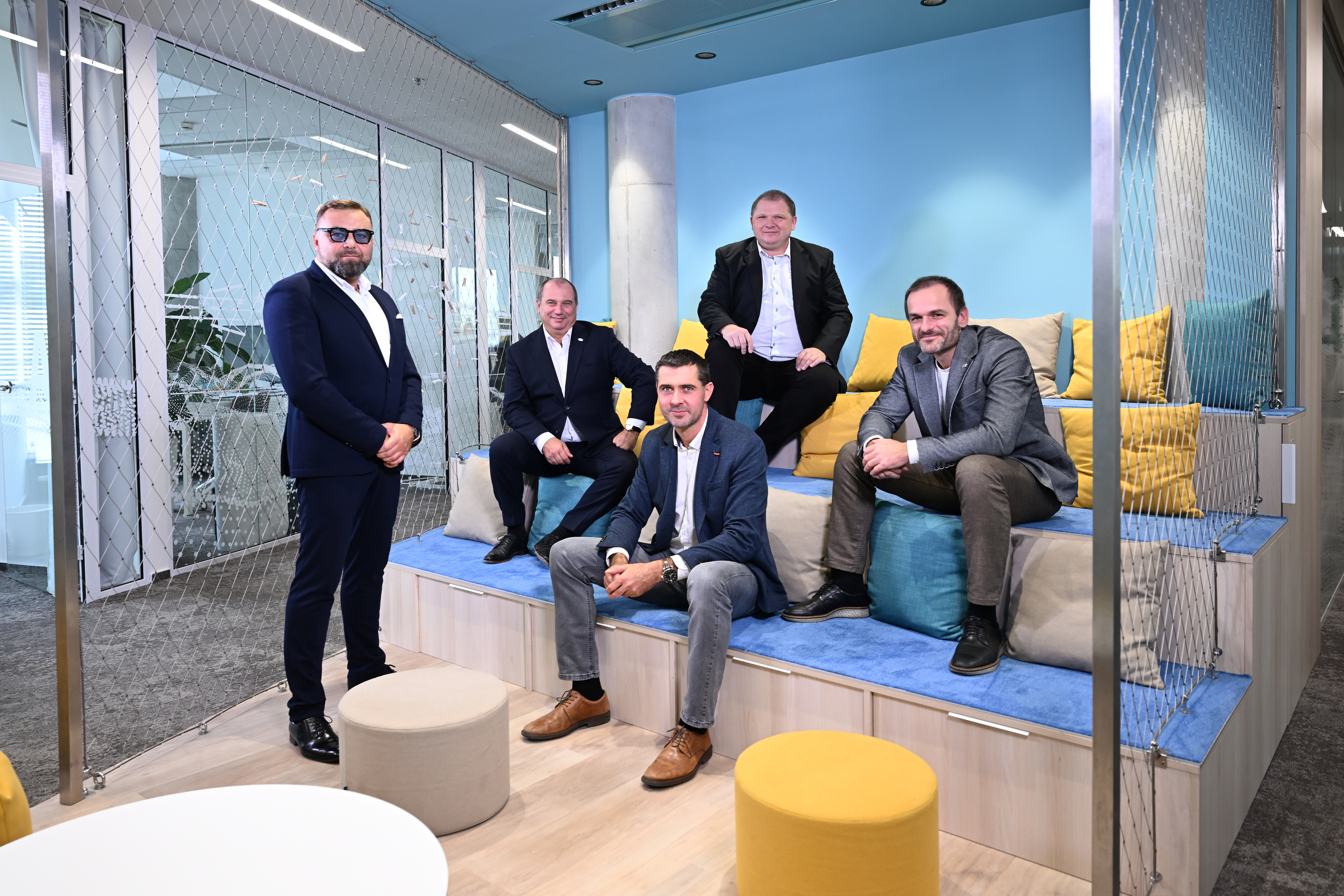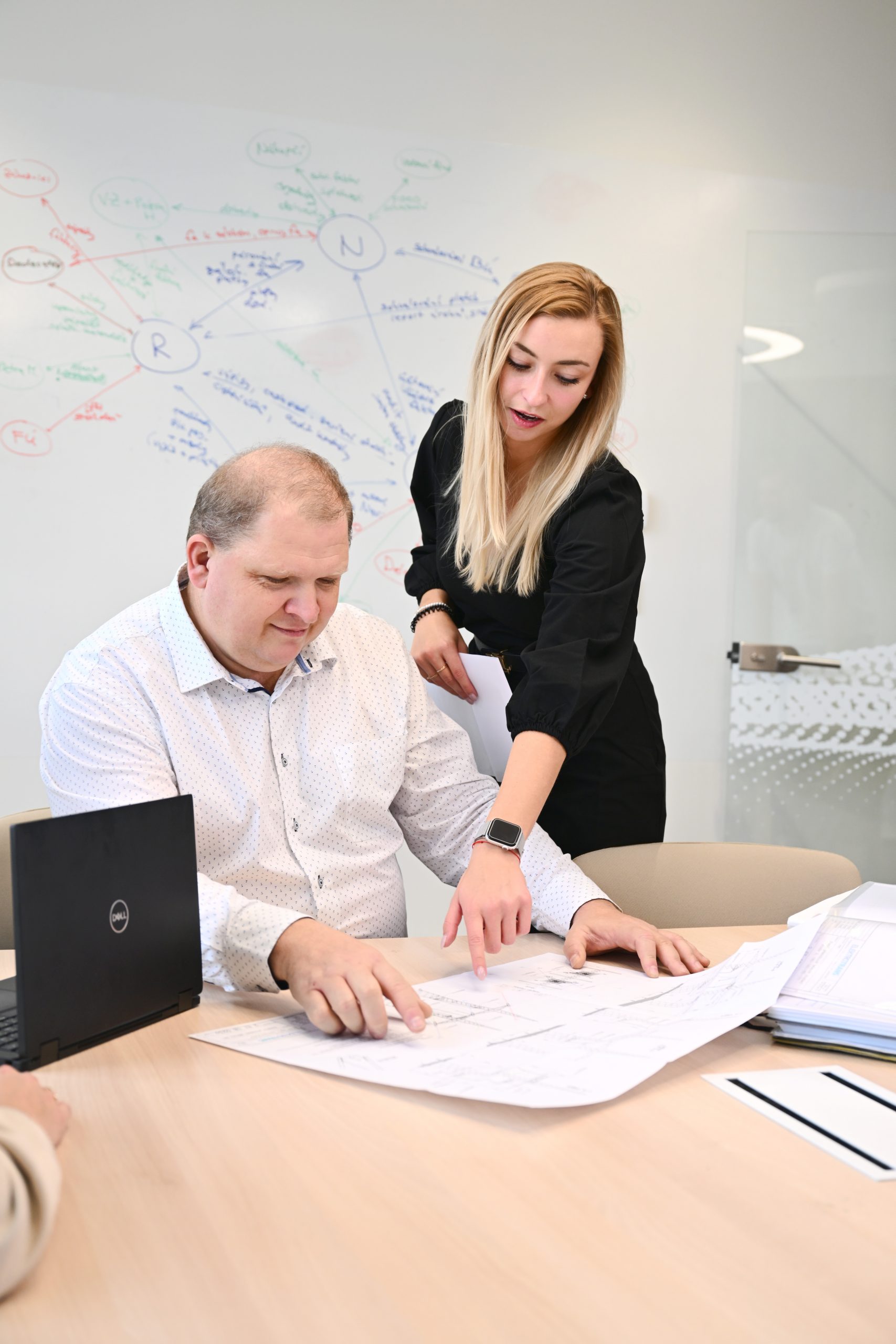ELEKTROTRANS: BIM and digital twins? I am looking forward to these innovations
In his office you will find five models of masts on his cabinet. Dunaj, Delta, Portal, Soudek, Kočka... Luděk Krba, the director of projection for Elektrotrans, lists their names. Thanks to him and his colleagues, the landscape is criss-crossed by backbone lines supplying millions of homes and businesses with electricity.
Designing a new high voltage line through the Czech countryside is a process that is not comparable to building a new motorway. Yet it is much less visible at first glance and perhaps even less appreciated. “We have become accustomed to having electricity all the time. People take it for granted, and it’s also our job to explain that it’s not. That power lines are getting older, often 50 years old. And that it needs to be renewed,” says the man who joined Elektrotrans as a line designer right after the company was founded in 1999.
What does it mean today to design a new line?
It depends on whether it is a new construction or a renovation. Both are similar technically, but new construction is more difficult in terms of public and civil law review.
Is that up to you as well?
Yes, our job is to get everything in the area sorted out. Simply put, for new lines we get a brief from the client “do we need to get power here or vice versa from here”. An example is the gigafactory in Líně near Pilsen, where a 400kV line had to be brought in. The opposite example is a large photovoltaic park. In the second variant, we get a requirement for a result – there is a line that will carry 500 amps, seven hundred are needed. It’s up to us to design whether we tear down the poles and build new lines, or maybe use special conductors.

I suppose there are more reconstructions.
Yes, in addition to renewing aging lines, it’s often about improving reliability. One reason is to enhance the existing transmission capabilities of the lines. In many locations the required power is increased. Whether for electromobility or for comfort – air conditioners in summer, heat pumps in winter. All these devices consume electricity. The second reason is to improve the operational capabilities of the grid. Lines are often built so that we have alternate routes, so that one can be switched off, for example. The third reason is new energy sources from which we need to extract power.
Elektrotrans concentrates mainly on extra-high voltage and very high voltage lines, i.e. the backbone. You have five models of pylons on display in your office. How is their design evolving?
The power industry in general is very conservative, which means that it has to be very reliable. There is development, but it generally takes time to get something new into use. Then it can be used for decades.
So will I see these five masts in the Czech landscape?
In principle, yes. What you see are masts called Dunaj, Soudek, Portal, Delta and Kočka. The nicknames are historical, derived from their shape or origin. I’m not sure about the Cat, perhaps because its shape resembles a cat’s head and ears.
What do you use to choose which one to use?
Sometimes it’s part of the brief, for example ČEZ Distribuce a.s. usually uses the Soudek type. If they choose another one, there is some external reason. For example, for an airport, it is necessary to keep the mast as low as possible. Each of the masts has certain characteristics – it is either narrower and higher or wider and lower. It also depends on the location, somewhere we choose the mast array according to the terrain. There doesn’t have to be only one type of mast per line.
And do you – purely personally – have a favourite?
I like the shape of the Danube because its construction is not one-dimensional. When I was young, I liked the Cat because of its ears (laughs).
Occasionally you come across photographs with design masts. Aren’t you tempted to design one?
Yes, they use them in the world. There’s a Mickey Mouse-shaped flagpole at Disneyland in Florida, and I think the ones at Roland Garros are shaped like tennis rackets. They do it a lot in the Nordic countries, and there have been several architectural competitions in Iceland that have resulted in flagpoles shaped like animals. One such project was also tackled in Prague, the mast was supposed to look like a hand, with wires running through the bellies of the fingers. The problem was that, for technological reasons, it would be more like a concrete monster. With a voltage level of 400 kV, the conductor needs to be approximately four metres away from the concrete part. This means that the finger would be 12 metres thick.
How does one even get to this job?
I initially enjoyed chemistry, but I couldn’t imagine spending my whole life in laboratories. After electrical engineering, I went to the Czech Technical University. Through my classmates, I got a part-time job as a designer at the then Elektrovod company. I was only in charge of simple tasks, but on the other hand I saw a huge room for innovation there. For example, I designed an excel spreadsheet for calculations, which is still used in some variation in design today. In the spring of 1999, I moved to the newly emerging Elektrotrans, which in turn was very progressive and used innovative methods.
What do I mean by that?
In Energovod, longitudinal profiles, i.e. basically longitudinal drawings of the projected lines, were often still drawn by hand. In Elektrotrans, they were already done only digitally. The company focused a lot on technological innovations and their development, which was not so common at that time. And I enjoyed that.
Can you remember which line you designed first?
Not the very first one, but the first one at Elektrotrans, yes. It was the reconstruction of the V203 Opočínek – Sokolnice line in the section of poles numbered approximately 145 to 305.
And which project was the most challenging?
I will not forget the V401 line crossing project, where we had to cross six other 400 kV lines with one 400 kV line. In the end, unfortunately, this did not materialise. And the biggest contract is still running. It is a completely new V406/407 line from Kočín next to Temelín to Mírovka – a substation near Havlíčkův Brod. We have been working on this since 2012. And I will not forget August 14, 2003, when a hail (horizontal air vortex) brought down the V465/466 line near Kadana. On Friday we learned that we had to do a project for the reconstruction of the poles, and the following Wednesday the project was handed in.
Does it often happen that faults occur at these voltage levels?
Much less compared to the lower levels. For example, there is a minimum of cases where a tree falls into the line. This is also due to the fact that a fault has huge consequences in the case of particularly high voltage. It won’t shut down one village, it could shut down the whole county.

You said that the energy industry is a very conservative industry. Yet change is happening. For example, there’s more and more talk of putting it in the ground.
It sounds nice, and I have seen one such building abroad, but they were laying cables in collectors. Above ground and underground solutions will serve their purpose equally, it’s mainly a question of how it looks. Overhead lines are usually relatively transparent structures, the conductors are the most visible. With underground, you can say that when it’s built and greened up, in theory you don’t know about it. But there are still a huge number of limitations. At the 400 kV voltage level, we are working with such power that the cables are 25 centimetres in diameter because of the insulation. A maximum of 600 metres of cable can be transported to the site on a spool, after this distance they must always be connected. At this point, a building object is then created. Two trenches of approximately 2 metres deep and 7 metres wide are required for the power we will transport overhead with two systems. The cables have to be laid in sand bedding, which is the material that needs to be hauled to the site, and in turn the original soil has to be removed. In this respect, it is similar to the construction of a motorway. Finally, heavy vehicles are not allowed to drive over the lines, so the question is how we would cope with this in an agricultural landscape where, for example, harvesters are driving around during harvesting. There is also a fundamental difference in cost.
Are there any trends in the design itself?
Even in our industry, we are talking about BIM and digital twins, so advanced design and line life cycle modelling. It’s a big change and will definitely make our job easier. I’m looking forward to that.
One last personal question. Do you have a professional “kink” and do you watch the masts on vacation?
I may be getting old, but it’s getting better (laughs). But of course when I see something being built somewhere, I look. It might have been at the expense of paying attention to driving before, but not anymore. But recently I was in the Beskydy Mountains, where they are doing a big reconstruction of a 400 kV line. There are old and new lines side by side. We drove under it twice, and the third time on a bike. And, of course, one can’t help but look and compare.

